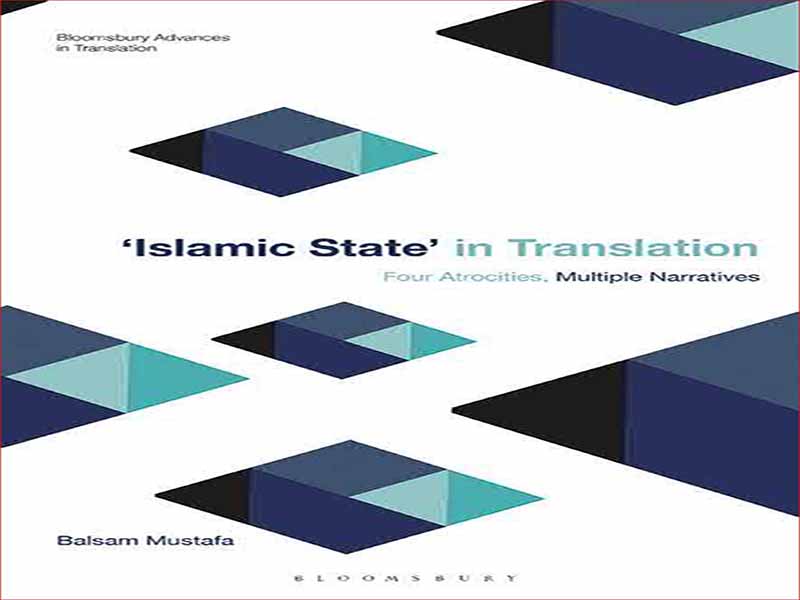- عنوان کتاب: Islamic State in Translation
- نویسنده: Jeremy Munday
- حوزه: دولت اسلامی
- سال انتشار: 2022
- تعداد صفحه: 225
- زبان اصلی: انگلیسی
- نوع فایل: pdf
- حجم فایل: 7.39 مگابایت
سفر من به نوشتن «دولت اسلامی» در ترجمه با انگیزههای دوگانه آغاز شد: شخصی و تحصیلی. من در اواخر سال 2013 عراق را ترک کردم تا مدرک دکترا را در رشته مطالعات ترجمه ادامه دهم. هرگز فکر نمی کردم که چند ماه بعد، زندگی من برای همیشه تغییر کند. به هیچ وجه اولین تجسم “داعش” همانطور که توسط برخی رسانه های غربی به تصویر کشیده شد (العقیدی، 2015)، تصرف موصل توسط “داعش” در 10 ژوئن 2014 یک لحظه محوری در تاریخ بود که عراق را برای سال های آینده شکل خواهد داد. مقیاس آن اکنون نشان دهنده جو سیاسی خصمانه در عراق از سال 2003 است و عمدتاً نتیجه سیاست های ویرانگر بازسازی ایالات متحده است (Mabon, 2017). از جمله انحلال ارتش عراق، فرمان بعثیزدایی، که هزاران نفر از اعضای حزب بعث را از نهادهای دولتی برکنار کردند، تأسیس حکومت موقت ائتلاف بر مبنای فرقهای، و بعداً «انتخاب و تشکیل این حزب». شورای موقت حکومتی، با استفاده از سهمیه های فرقه ای و قومی، [که] میراث خود را در یک سیستم انتخاباتی معیوب به جا گذاشته است» (مصطفی، 2018 ب). بحث عمیق در مورد همه شرایطی که ظهور گروه را تسهیل کرده است خارج از محدوده این کتاب است. با این حال، در اینجا ذکر این نکته مهم است که تشکیل “داعش” را نمی توان از دولت متلاشی شده عراق پس از سال 2003 و ساختار بازسازی شده جدا کرد. روابط قدرت بین سنیها و شیعیان و نارضایتیهای نهفته در آنها (مابون، 2017) که چالشهای بزرگی را در پیش رو دارد (حداد، 2014). فضای آشفتگی و نارضایتی سیاسی در عراق، به ویژه به دلیل رویکرد فرقهای و لفاظیهای دولت مالکی، تشدید شده است، که در نهایت به ظهور «داعش» کمک کرد (حداد، 2014).2 در ابتدا، رسانههای غربی و عربی نمیتوانستند یادآوری کنند. خوانندگان آنها از ارتباط بین رویداد ژوئن و ظهور “داعش” در سال های گذشته خبر می دهند. “داعش” از بیراهه بیرون نیامد. و همچنین به “شیوه خطی” ظهور نکرد (Oosterveld et al., 2017, p.5). بلکه از مجموعه ای از شرایط محلی، منطقه ای و جهانی، از جمله جنگ عراق در سال 2003 و هرج و مرج پس از آن، انقلاب های عربی در سال 2010 و جنگ داخلی سوریه از سال 2011 به وجود آمد (Oosterveld et al., 2017). شایان ذکر است، تشکیل گروه را می توان به تأسیس القاعده در عراق توسط ابو مصعب الزرقاوی در سال 2004، شاخه محلی القاعده، ردیابی کرد. از آن زمان، این گروه با نامهای مختلفی شناخته شد: «ابتدا به عنوان القاعده در عراق (AQI)، سپس شورای مشورتی مجاهدین، و سپس دولت اسلامی عراق (ISI)» (ویس و حسن، 2015، ص.xiii). ). زرقاوی راه را برای درگیری های فرقه ای که در سال های 2006-2007 به اوج خود رسید، هموار کرد. پس از کشته شدن او در حمله آمریکا در سال 2006، جانشین او، ابوعمر البغدادی، رسما AQI را به دولت اسلامی عراق (ISI) که متشکل از القاعده و سایر گروه های افراطی بود تغییر نام داد (عبدالرزاق و استانسفیلد، 2016). تشدید تنش فرقهای 2006-2007 حضور ISI را افزایش داد، اما فعالیتهای آن در چند سال بعد به طور قابل توجهی به دلیل حضور نیروهای آمریکایی شروع به کاهش کرد (Oosterveld et al., 2017). با این حال، کاهش نسبی در فعالیت های آن برای مدت طولانی دوام نیاورد. تداوم بی ثباتی سیاسی در کشور زمینه مناسبی را برای رشد مجدد آن فراهم کرد. در سال 2011، «داعش» دوباره ظهور کرد و در سال 2013، تحت رهبری ابوبکر البغدادی، این گروه نام دولت اسلامی در عراق و شام (داعش) را برگزید (ویس و حسن، 2015). این برچسب در سال 2014 در زمان خلیفه خودخوانده البغدادی به دولت اسلامی (IS) تغییر کرد (Oosterveld et al., 2017). “جهش” جنبش جهانی القاعده (راماکریشنا، 2017، ص.2)، “داعش” پای خود را در جاهای دیگر خارج از عراق و سوریه، از جمله آسیای جنوب شرقی و مرکزی، و همچنین در آفریقا پیدا کرده است. نگاه کنید به اعظمی، 2016؛ سیگل و ویلیامز، 2017). گسترش منطقه ای و جهانی آن با هدف ایدئولوژیک آن برای ایجاد یک خلافت واحد که چندین ولایت [ولایت] را در بر می گیرد، همسو بوده است (اعظمی، 1395). خلافت ایده قدرتمند و جذابی بوده است که این گروه را قادر می سازد تا مسلمانان بسیاری را از سراسر جهان به خدمت بگیرد و آن را به عنوان رقیب اصلی القاعده قرار دهد (راماکریشنا، 2017). در فصل اول کتاب به این نکته باز خواهم گشت.
My journey writing ‘Islamic State’ in translation started with dual impulses: personal and academic. I left Iraq in late 2013 to pursue a PhD degree in Translation Studies. I never thought that a few months later, my life would change forever. By no means the first incarnation of ‘IS’ as was depicted by some western media (Al-Aqeedi, 2015), ‘IS’s’ capture of Mosul on 10 June 2014 was a pivotal moment in history that would shape Iraq for years to come. Its scale now attested to the hostile political atmosphere in Iraq since 2003 and was largely an outcome of the devastating US reconstruction policies (Mabon, 2017). Among these were the disbanding of the Iraqi army, the de-Baathification decree, which removed thousands of members of the Baathist party from governmental institutions, the founding of the Coalition Provisional Authority on a sectarian basis, and later ‘the selection and formation of the Interim Governing Council, using sectarian and ethnic quotas, [which] have left its legacy in a flawed electoral system’ (Mustafa, 2018b). An in-depth discussion of all the conditions that facilitated the group emergence is beyond the scope of this book.1 However, it is important to note here that ‘IS’s’ formation cannot be separated from the post-2003 fragmented Iraqi state and the restructured power relations between Sunnis and Shias and the grievances embedded within them (Mabon, 2017), posing immense challenges ahead (Haddad, 2014). A climate of political turbulence and resentment in Iraq has intensified, especially due to the al-Maliki government sectarian approach and rhetoric, eventually contributing to ‘IS’s’ rise (Haddad, 2014).2 At first, both Western and Arabic media could not remind their readers of the connection between the June’s event and ‘IS’s’ rise in the previous years. ‘IS’ did not come out of the blue. Nor did it emerge in ‘a linear fashion’ (Oosterveld et al., 2017, p.5). Rather, it grew out of a constellation of local, regional and global circumstances, including the Iraq war in 2003 and the chaos that followed, the Arab revolutions in 2010 and the Syrian civil war since 2011 (Oosterveld et al., 2017). Notably, the group formation can be traced back to the foundation of al-Qaeda in Iraq by Abu Musab al Zarqawi in 2004, a local branch of al-Qaeda. Since then, the group was known under different names: ‘first as al-Qaeda in Iraq (AQI), then the Mujāhidīn Advisory Council, and then the Islamic State of Iraq (ISI)’ (Weiss and Hassan, 2015, p.xiii). Zarqawi paved the way for the sectarian conflict, which was at its peak in 2006–7. Following his death by a US strike in 2006, his successor, Abu Omar al-Baghdadi, officially renamed AQI into Islamic State of Iraq (ISI), which consisted of al-Qaeda and other extremist groups (Abdulrazaq and Stansfield, 2016). The heightened sectarian tension of 2006–7 enhanced ISI’s presence, but its activities started to significantly decrease in the few following years mainly due to the presence of US troops (Oosterveld et al., 2017). However, the relative decline in its activities did not last for a long time. The continued political instability in the country provided the perfect breeding grounds for its regrowth. In 2011, ‘IS’ reemerged and, in 2013, under the leadership of Abu Bakr al-Baghdadi, the group adopted the name of Islamic State in Iraq and Sham (ISIS) (Weiss and Hassan, 2015). This label changed to Islamic State (IS) in 2014 under their self-proclaimed caliph, al-Baghdadi (Oosterveld et al., 2017). A ‘mutation’ of the global al-Qaeda movement (Ramakrishna, 2017, p.2), ‘IS’ has found its foot in other places outside Iraq and Syria, including south-east and central Asia, as well as in Africa (see Azami, 2016; Siegle and Williams, 2017). Its regional and global expansion has been in tandem with its ideological aim of establishing a single Caliphate encompassing several wilayats [provinces] (Azami, 2016). The caliphate has been a powerful and attractive idea enabling the group to recruit many Muslims from across the globe, placing it as al-Qaeda key rival (Ramakrishna, 2017). I will return to this point in the first chapter of the book.
این کتاب را میتوانید از لینک زیر بصورت رایگان دانلود کنید:
Download: ‘Islamic State’ in Translation




































نظرات کاربران